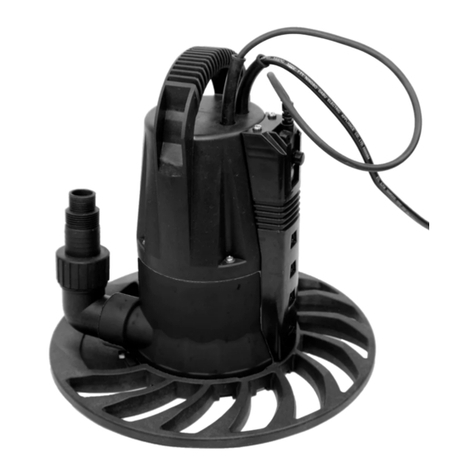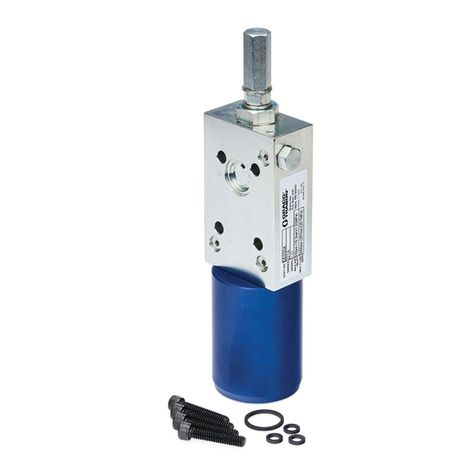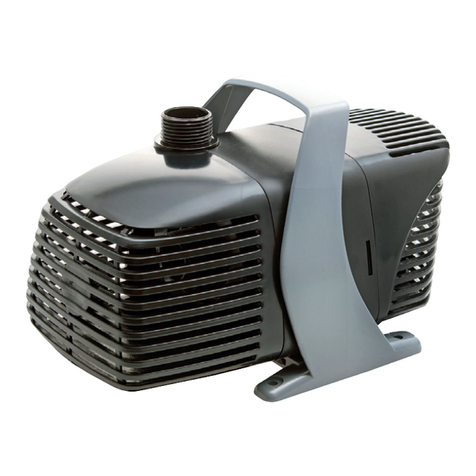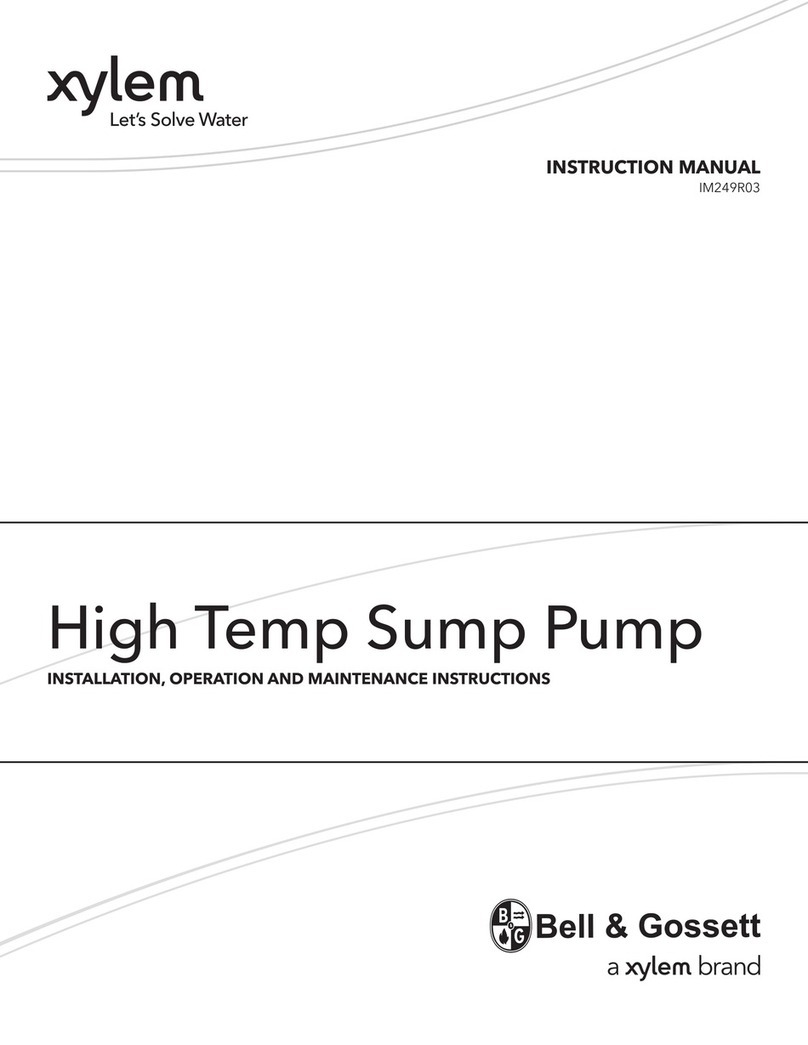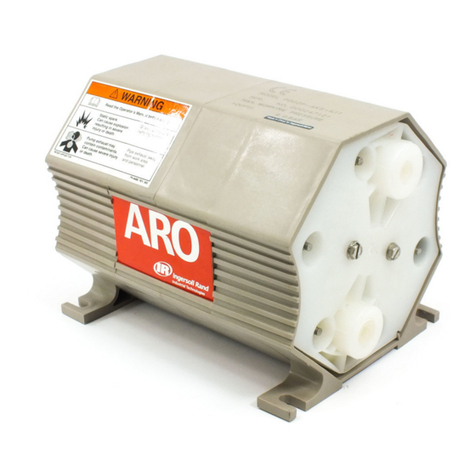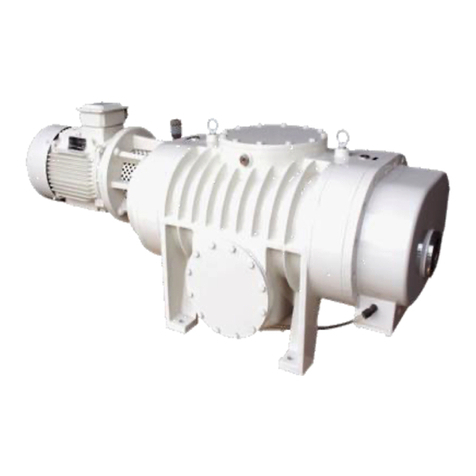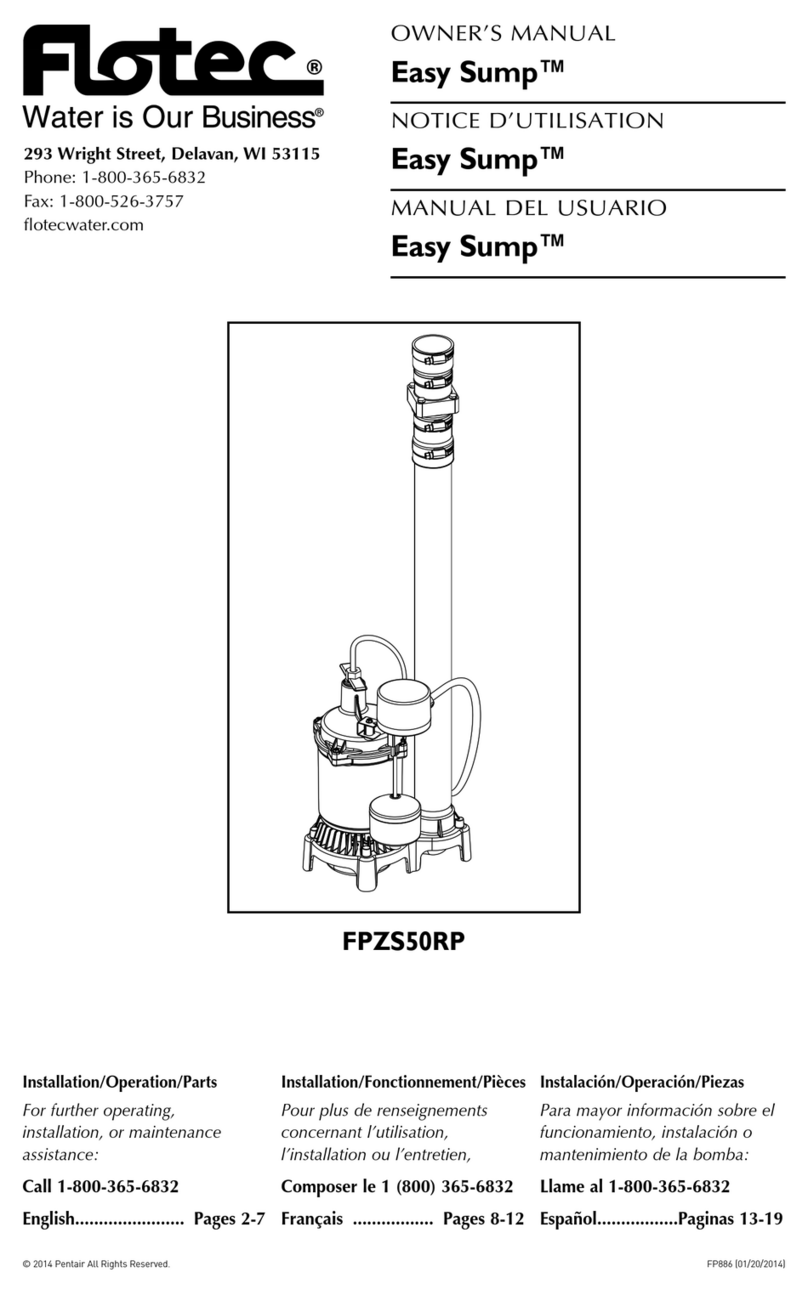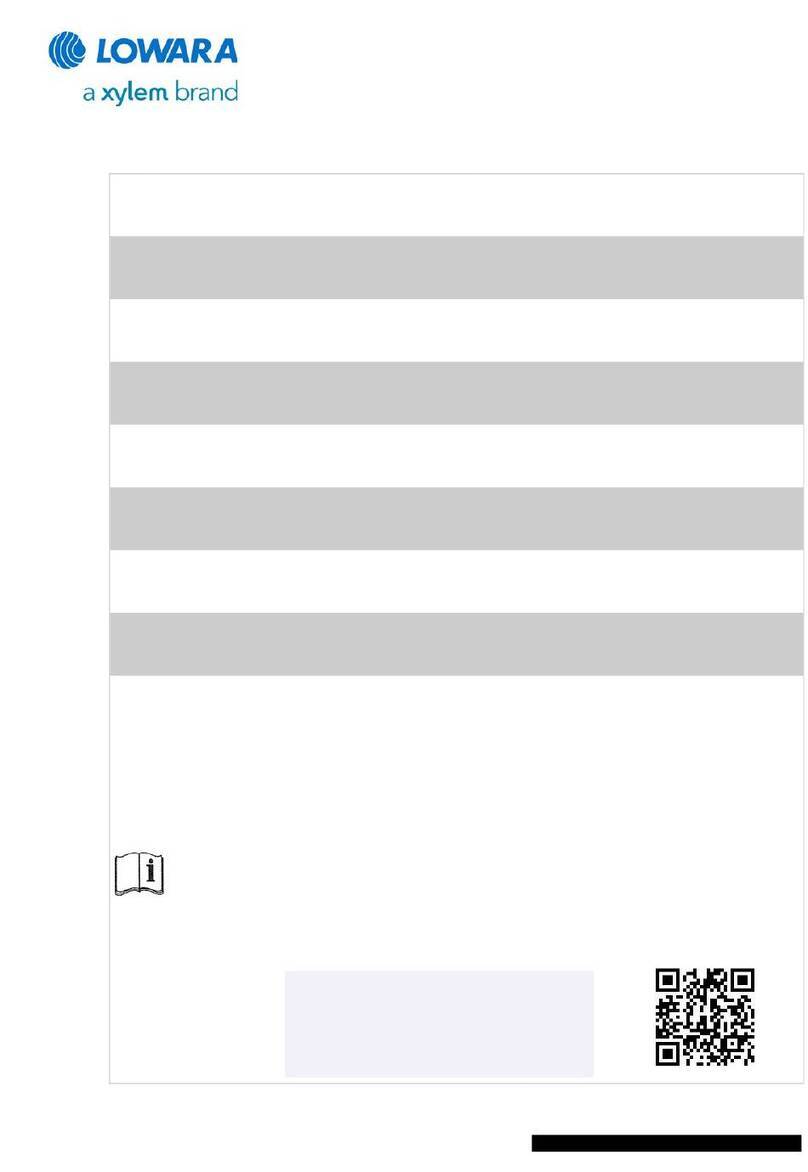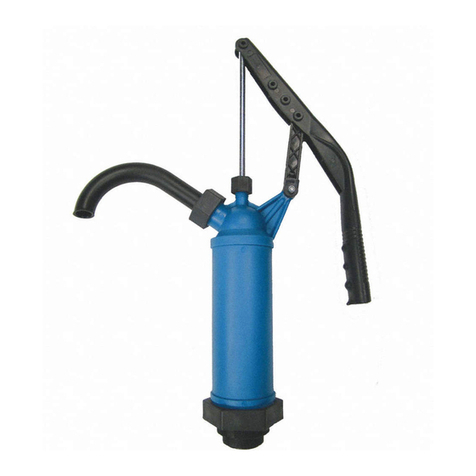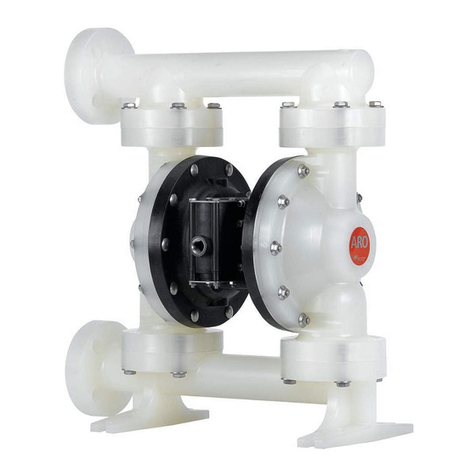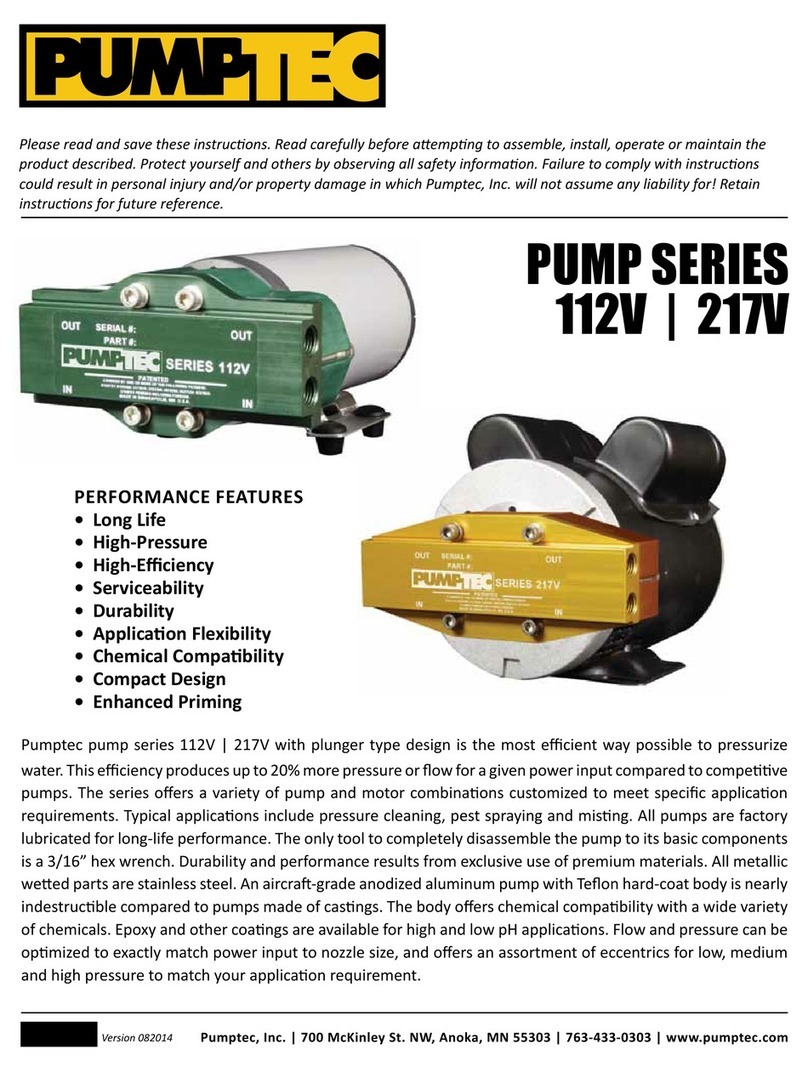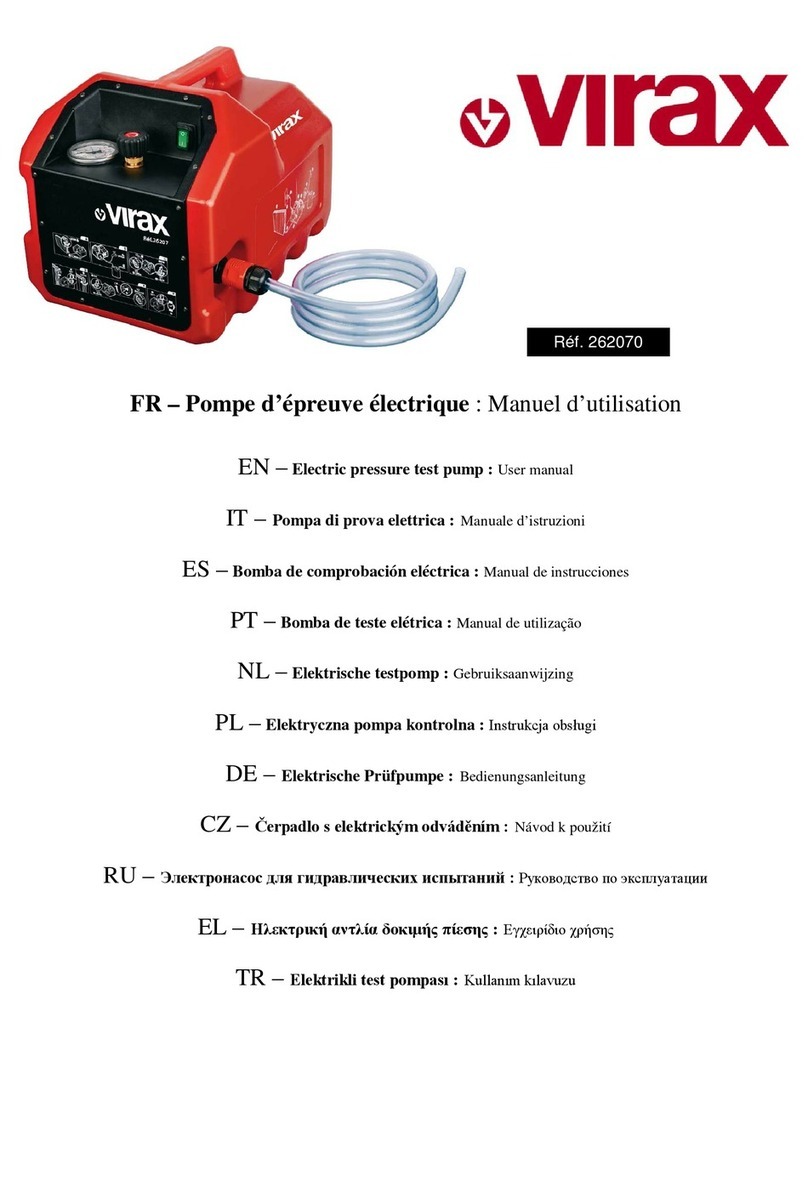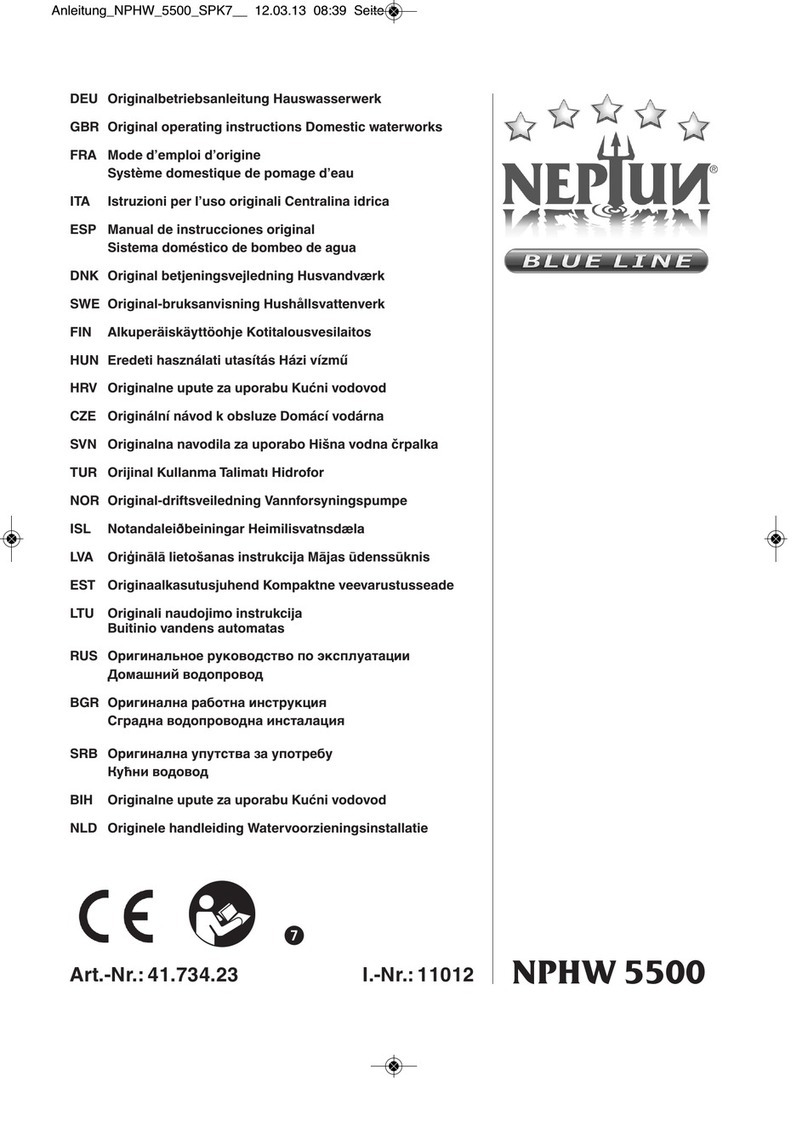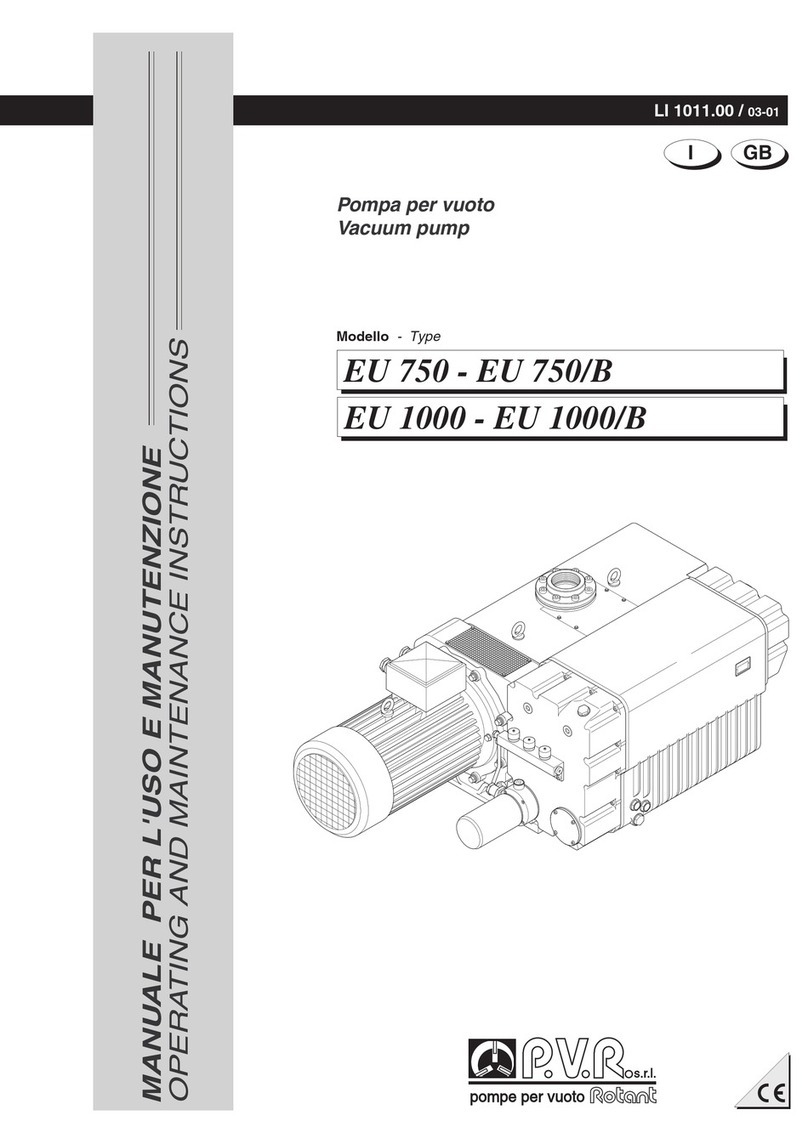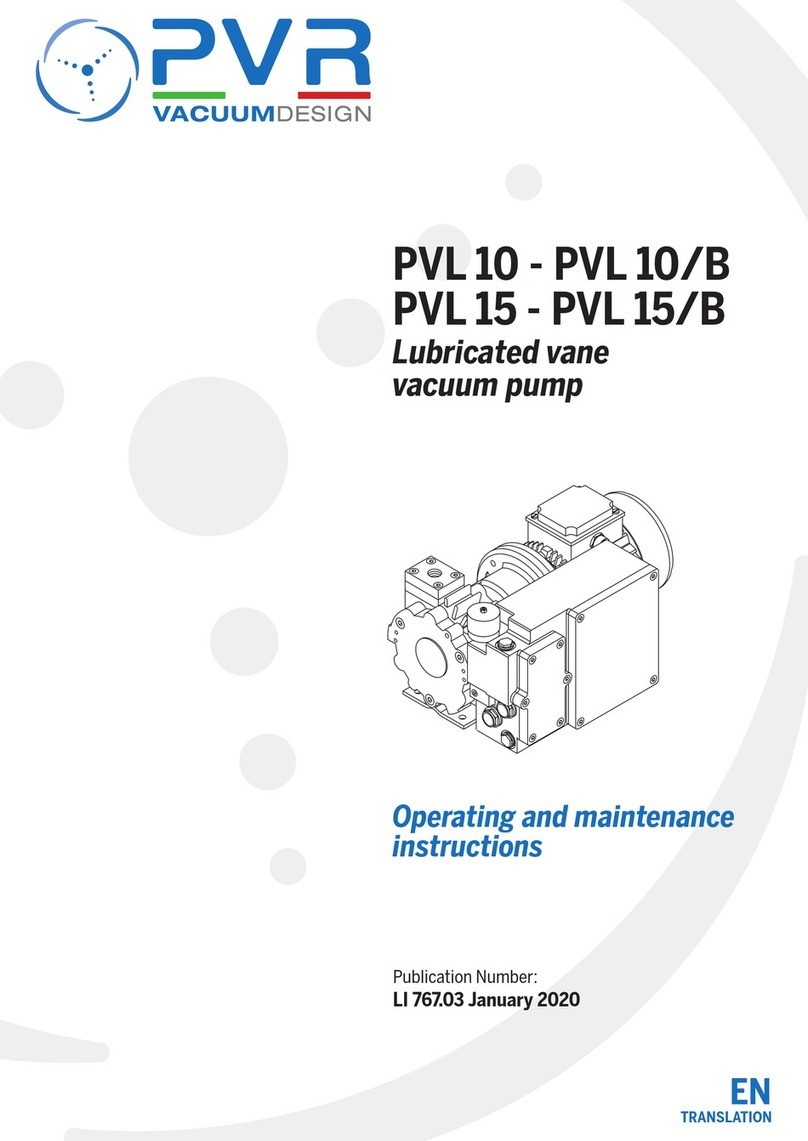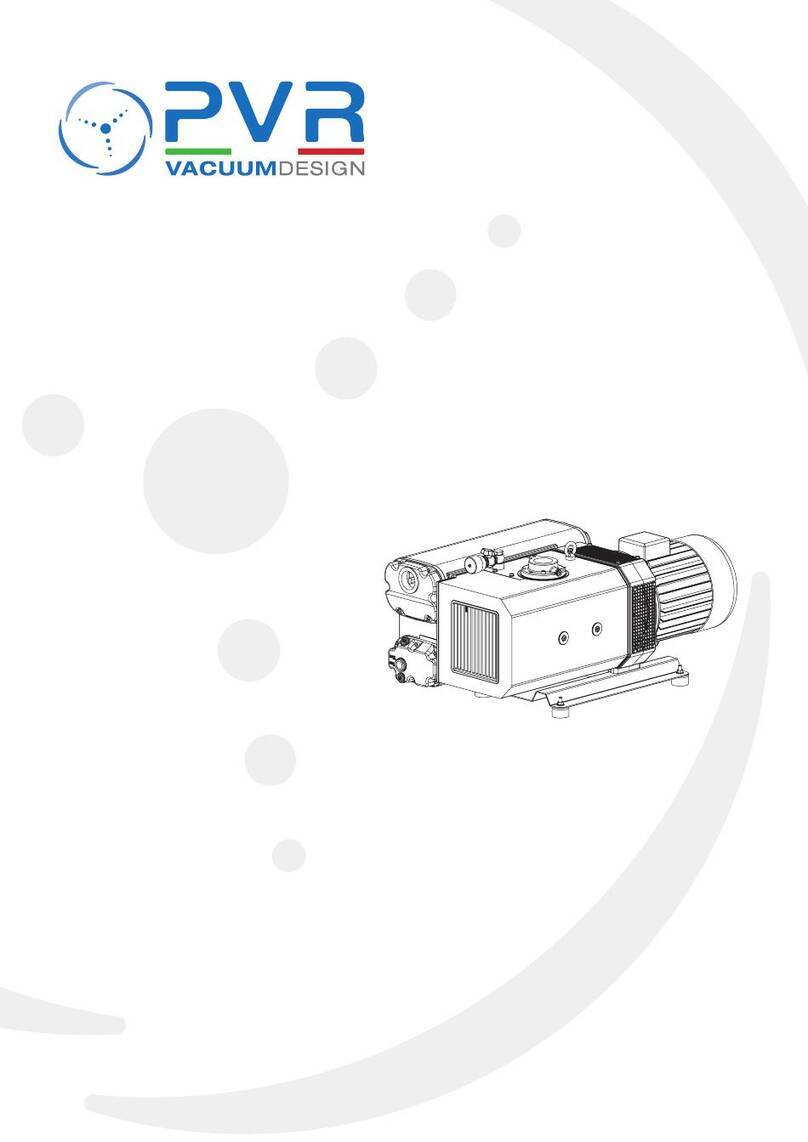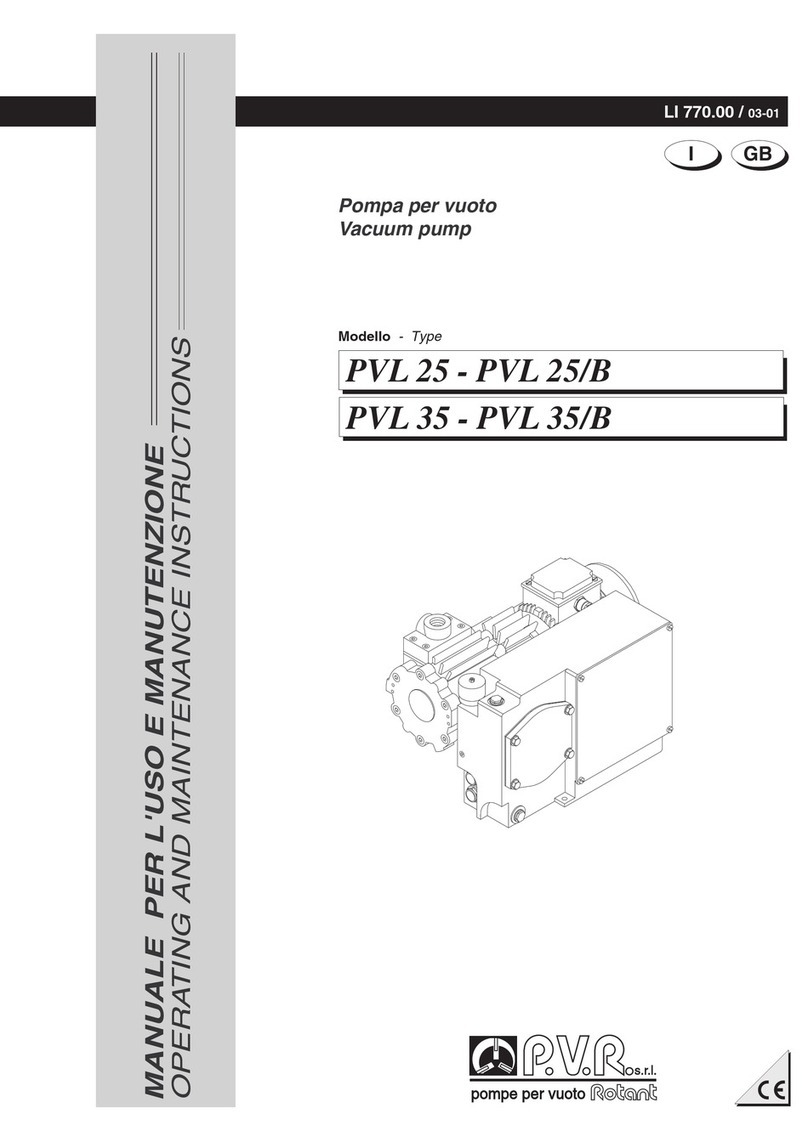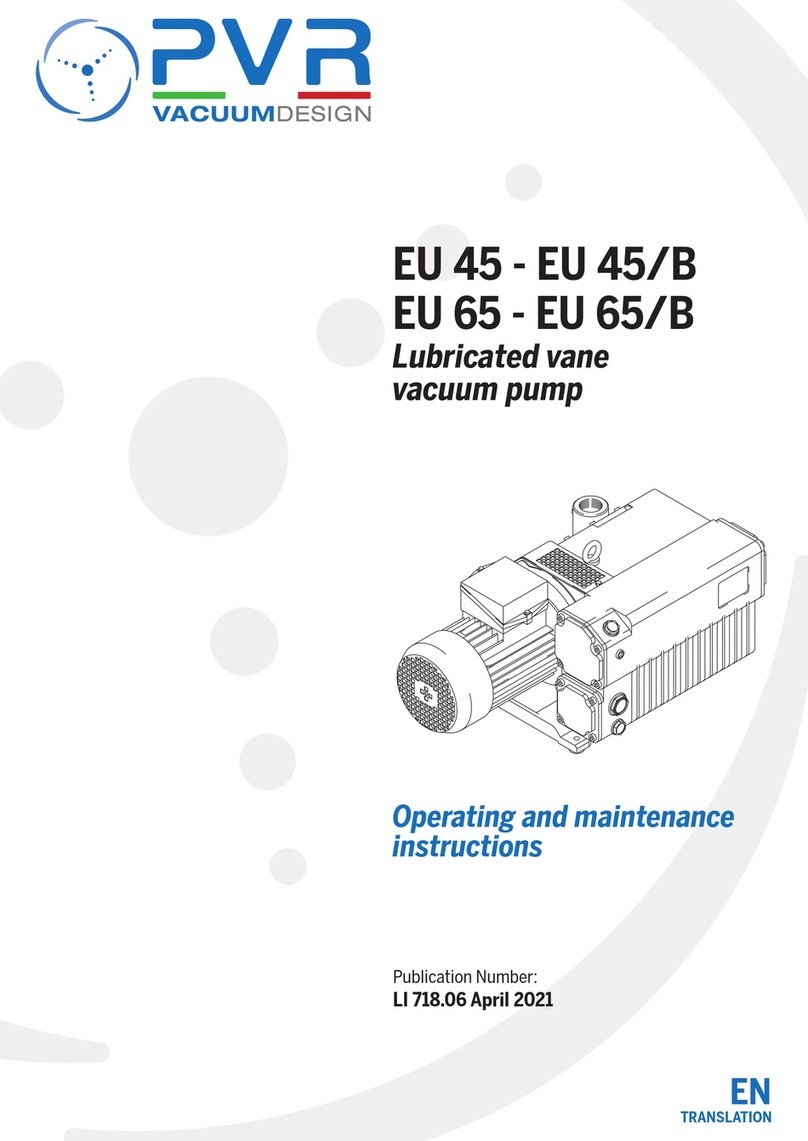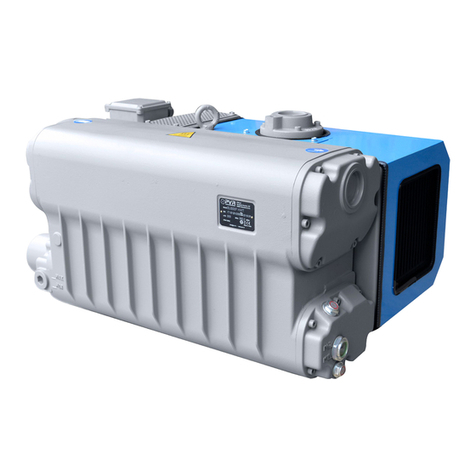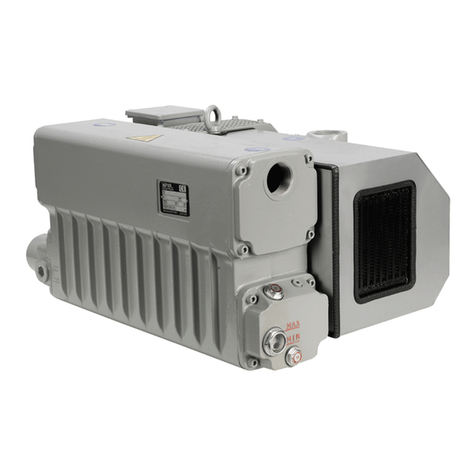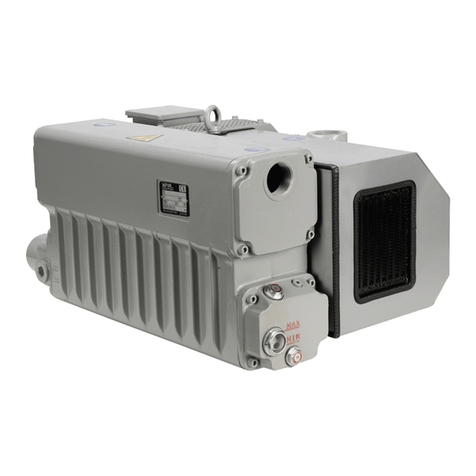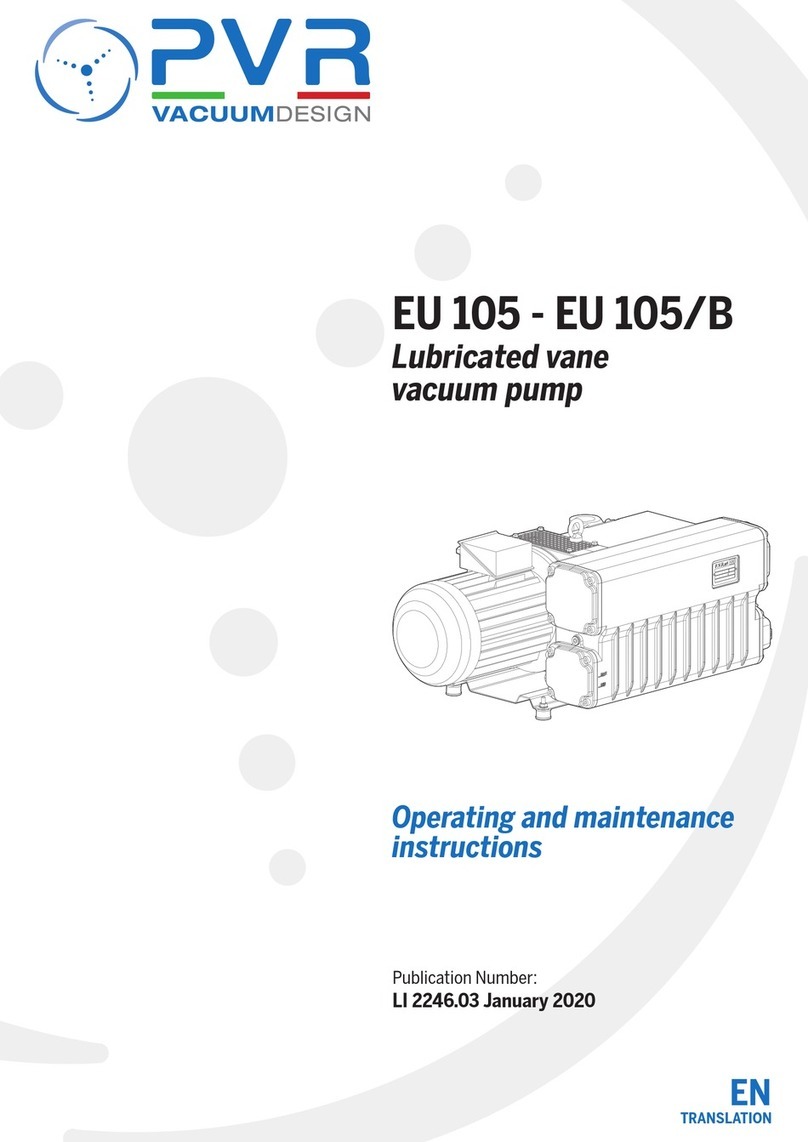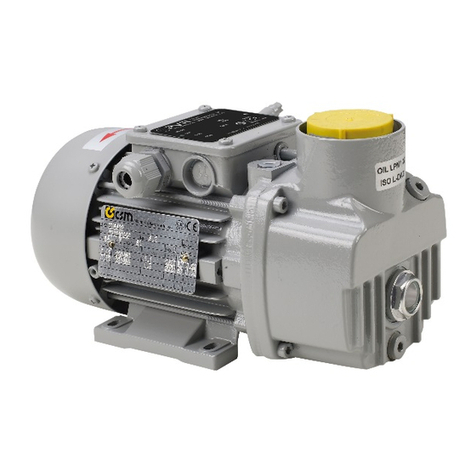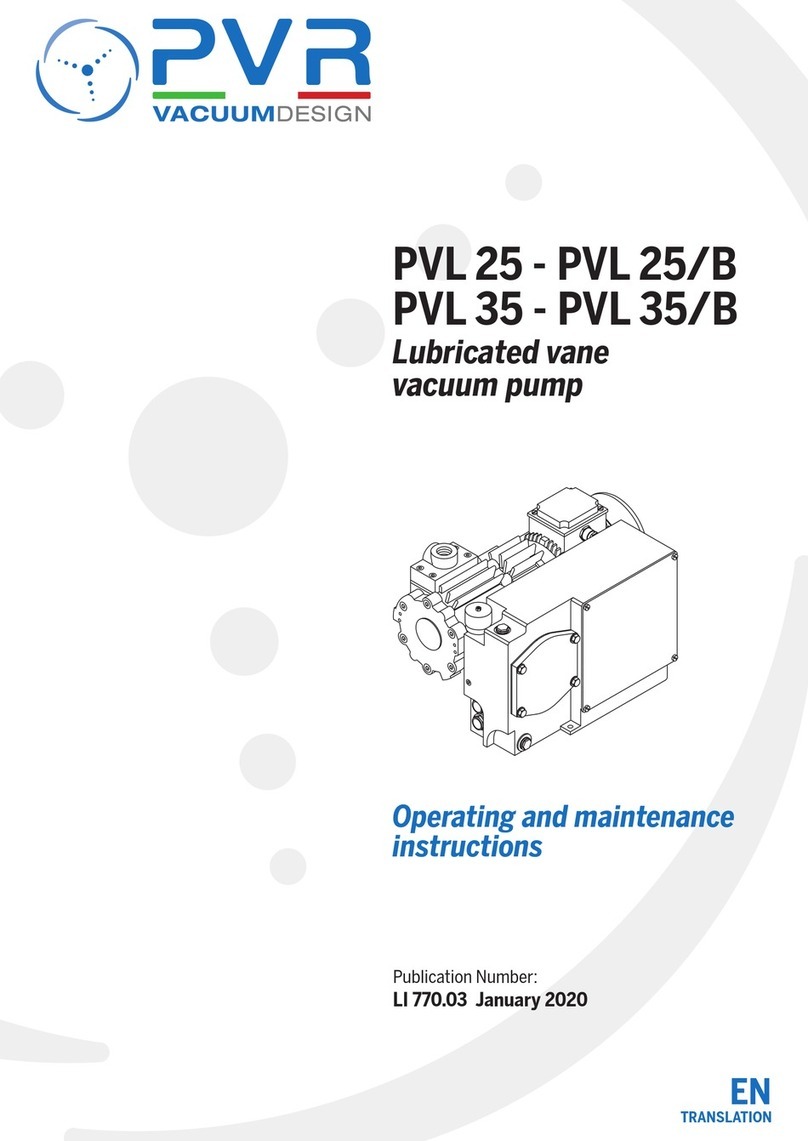
2
LI 3904.03
Operating and maintenance instructions
EN
Index
1. General information ..............................................................................................page 3
2. Product specifications ....................................................................................... page 4
2.1 Pump description............................................................................................. page 4
2.2 Expected use.....................................................................................................page 5
2.3 Forbidden use....................................................................................................page 5
2.4 Protections ........................................................................................................page 5
2.5 Accessories .......................................................................................................page 5
3. Safety rules ........................................................................................................... page 6
4. Transport/handling ............................................................................................ page 8
4.1 Lifting ................................................................................................................ page 8
4.2 Unpacking and components control.............................................................. page 8
4.3 Storage ............................................................................................................. page 8
5. Installation and operation .................................................................................. page 9
5.1 Assembly........................................................................................................... page 9
5.2 Location ...........................................................................................................page 10
5.3 Connection to the machine............................................................................ page 11
5.4 Discharge air pipe line installation................................................................. page 11
5.5 Electrical connection......................................................................................page 12
5.6 Commissioning ...............................................................................................page 13
5.7 Tips for using ...................................................................................................page 13
5.8 Water vapour intake........................................................................................page 14
6. Servicing............................................................................................................... page 14
6.1 General information ........................................................................................page 14
6.2 Oil change........................................................................................................page 15
6.3 Coupling elastic element replacement .........................................................page 16
6.4 Exhaust filters replacement........................................................................... page 17
6.5 Float valve........................................................................................................ page 17
6.6 Spares necessary for normal servicing.........................................................page 18
6.7 Pump overhaul ................................................................................................page 18
6.8 How to order spare parts ...............................................................................page 18
7. Lubricants.............................................................................................................page 18
8. Decommissioning................................................................................................page 19
9. Return for repair..................................................................................................page 19
10. Disposal...............................................................................................................page 19
11. Troubleshooting ................................................................................................ page 20
Attachments
Technical data sheet, exploded view and parts list (RDT)
EC declaration of conformity (DC)
Electric motor operating instructions
Instructions for the accessories
